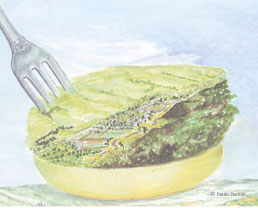Rivers and tributaries function as arteries in a hydrological system. The Carmel River headwaters begin approximately at 4,080 feet in the Santa Lucia Range just below the Pine Ridge Trail in the Ventana Wilderness. Hiking towards Pine Valley from Church Creek Divide, small, visible springs give genesis to larger downstream flows. Side streams come in from the east off  Miller Ridge and from the west higher up near Divide Camp.
Miller Ridge and from the west higher up near Divide Camp.
As the water moves downstream creaks flow from the eastern, northern, and southern areas of the watershed to meet the main stem of the river. During very wet winters, many other canyons of the watershed carry streams which eventually meet the Carmel River.
In the lower valley, the river loses speed. It deposits cobbles, gravel, sediment, and plant matter carried from the upper river and tributaries. In the past, when the river slowed down, it tended to widen and meander across the valley depositing rich sediments. Flooding is a natural occurrence of the river. However, homes and businesses built in the flood plain now restrict the natural movement of the water.
It is through the natural hydrological system that the watershed has been and is continually formed. At the same time, the river is influenced by human actions on the surrounding land.



